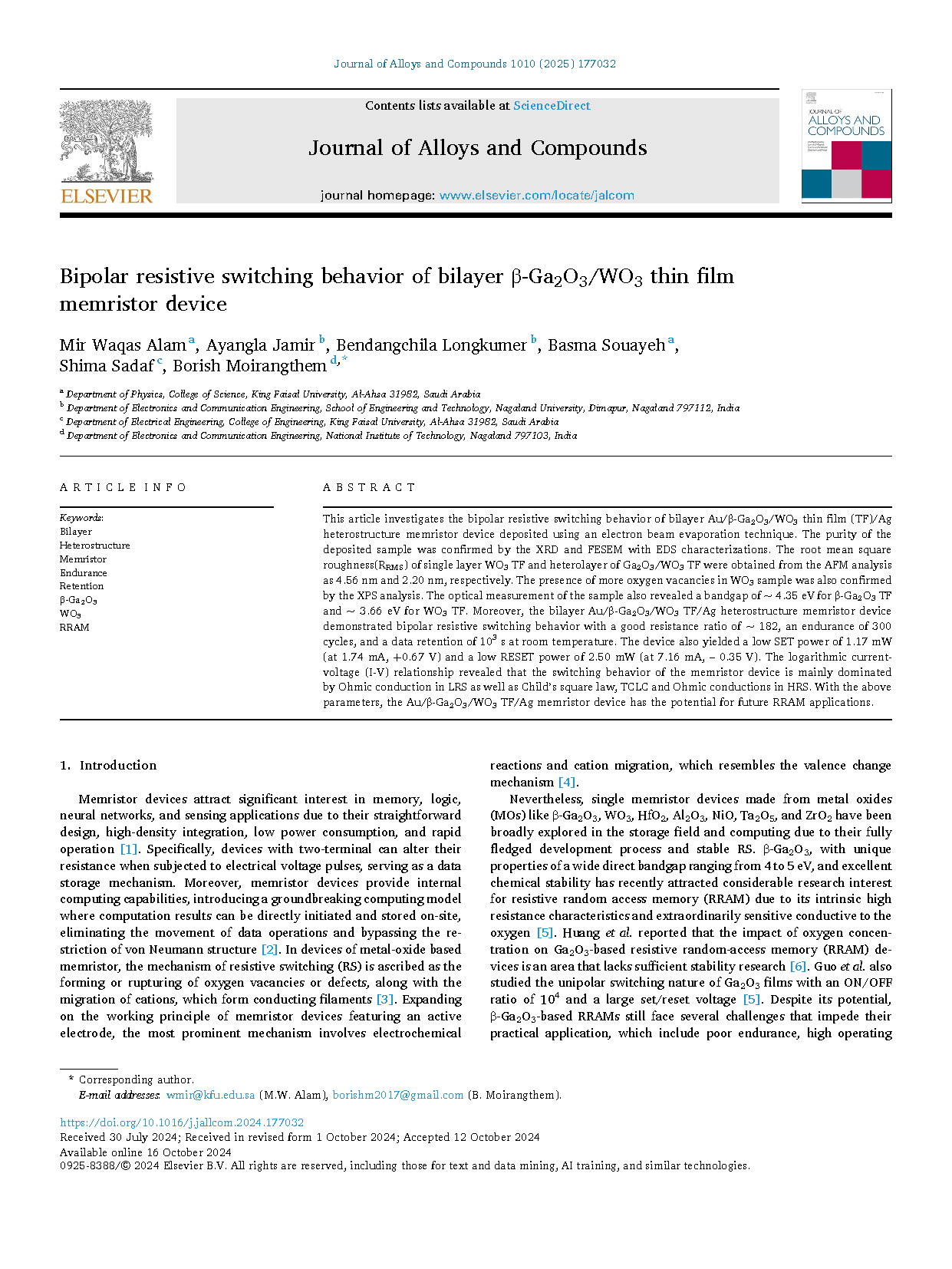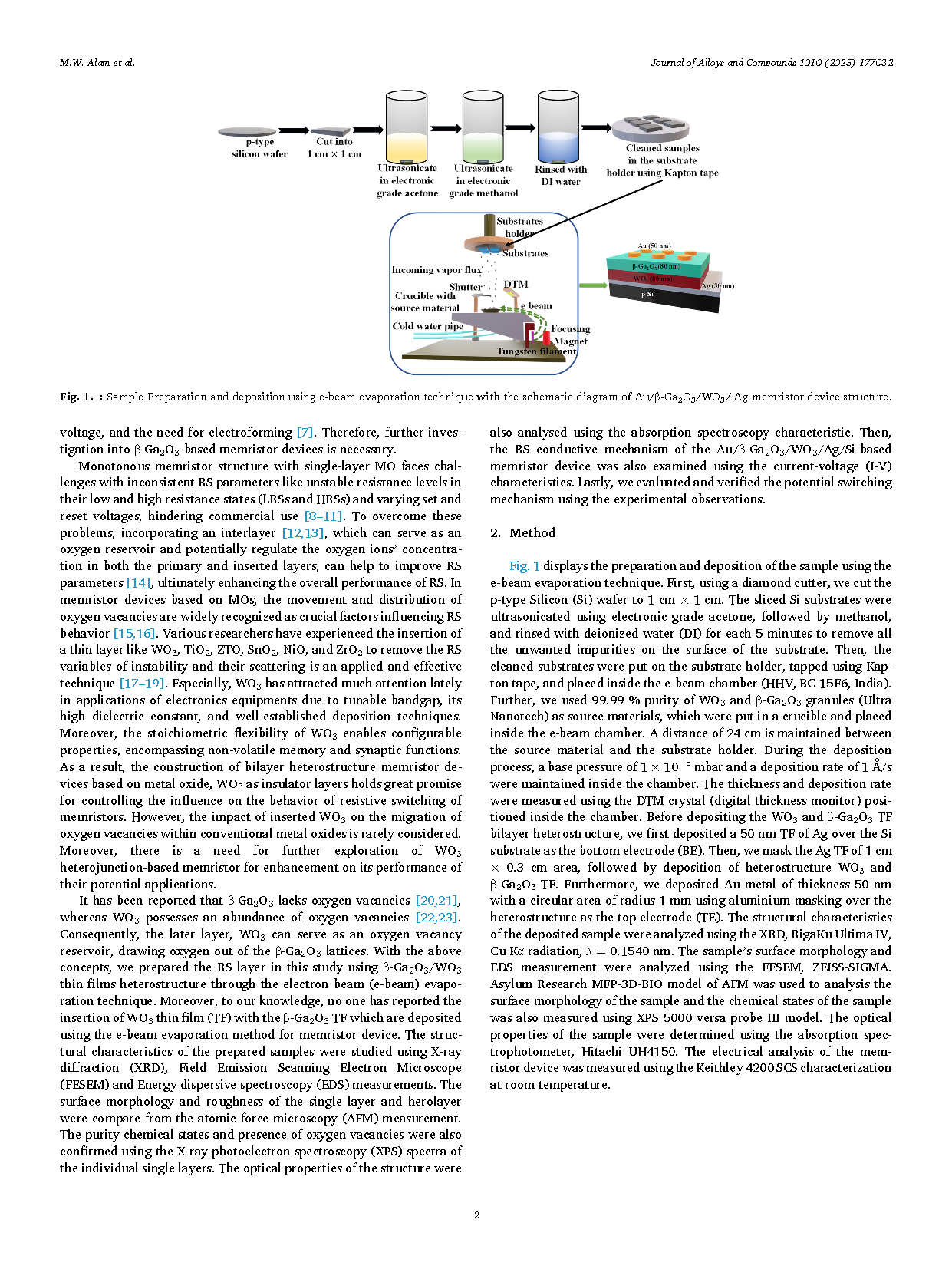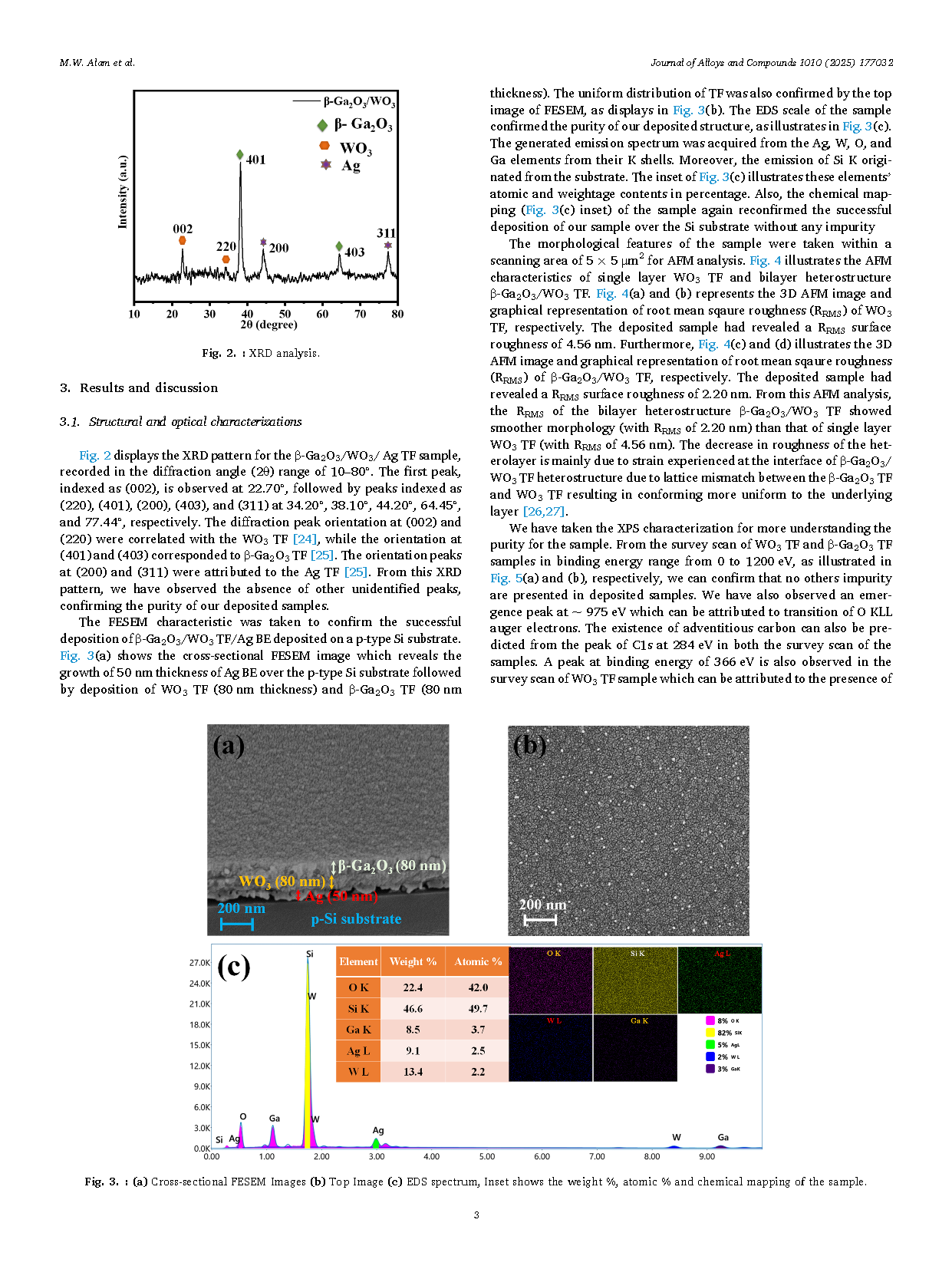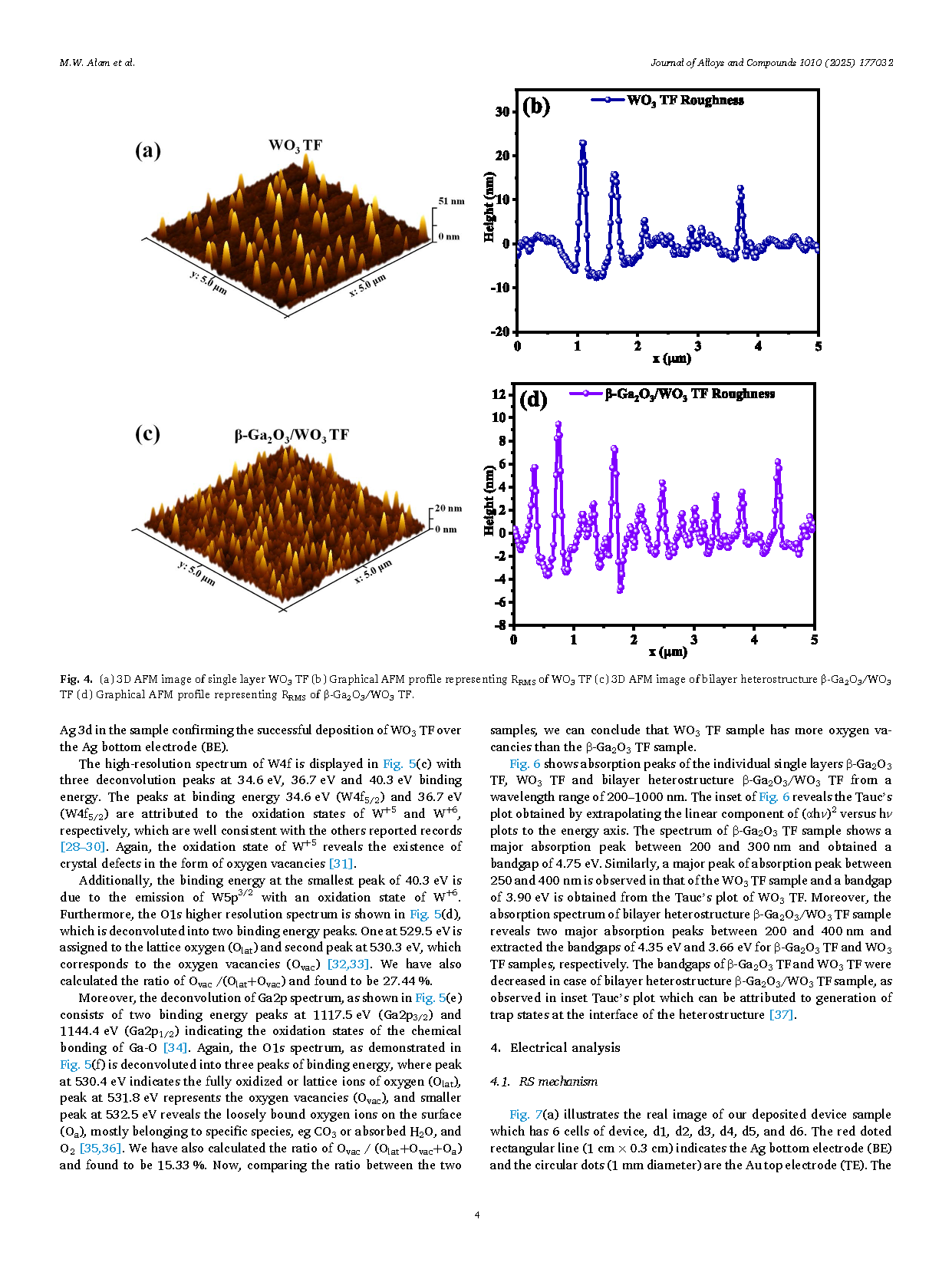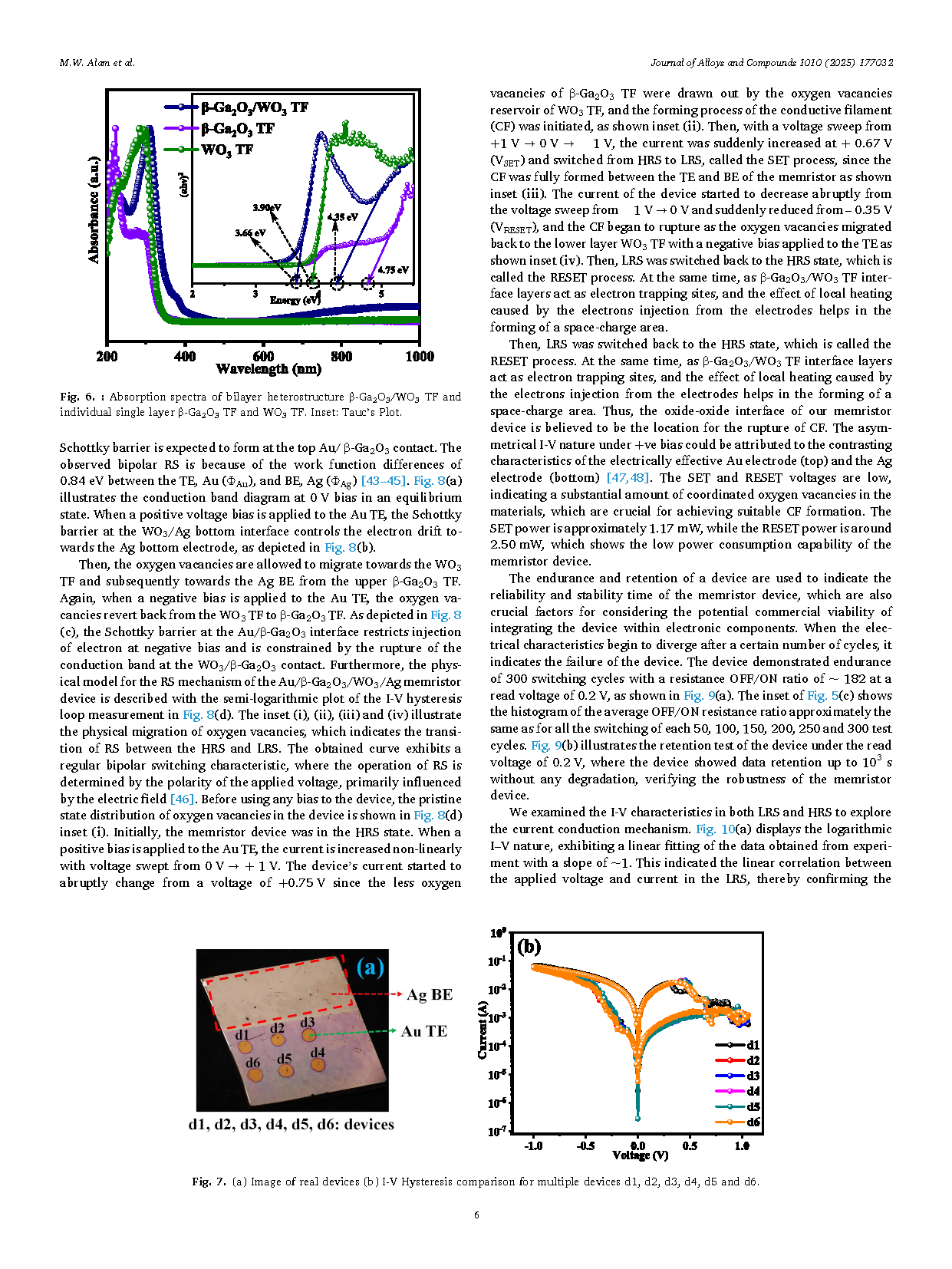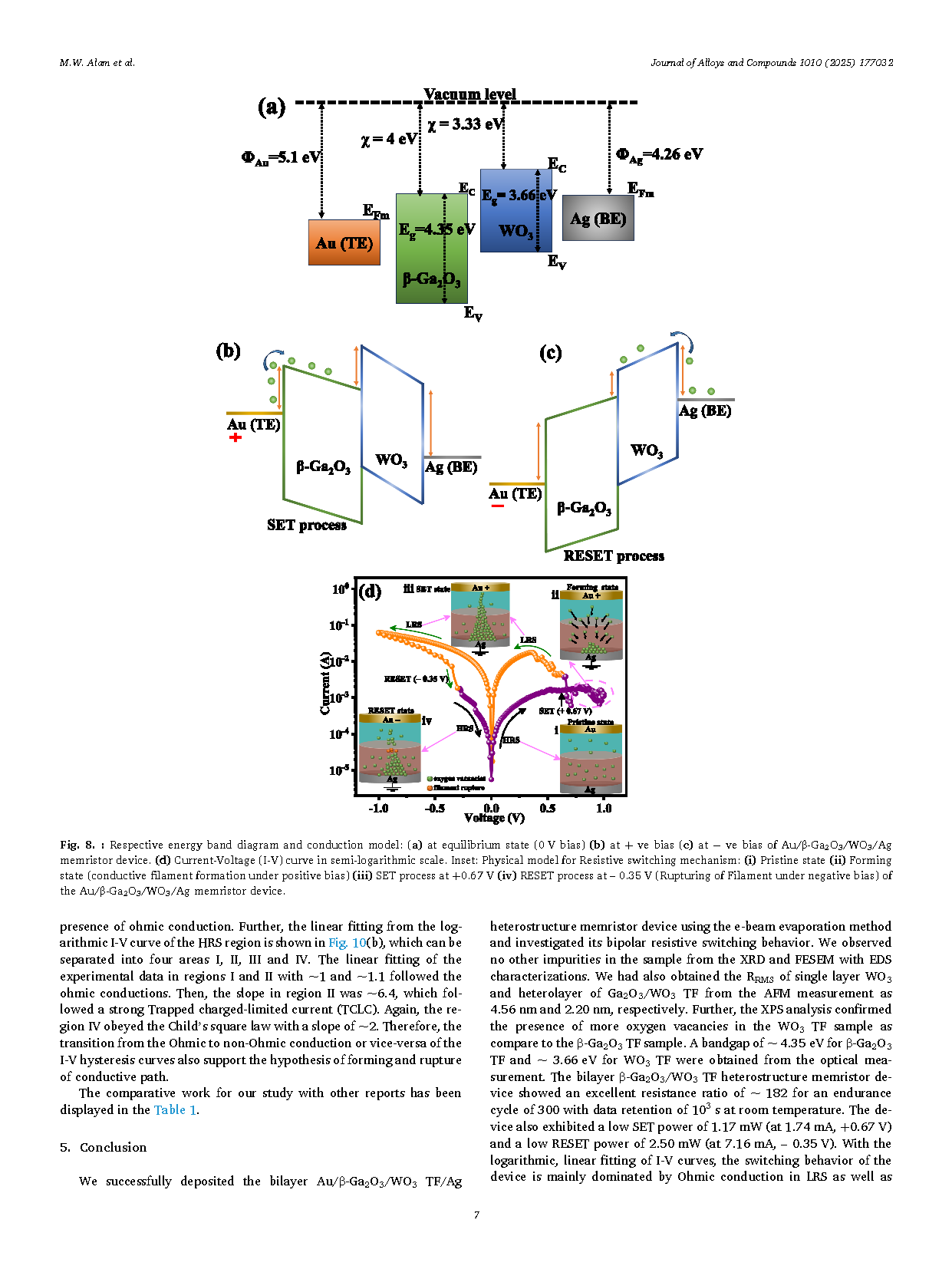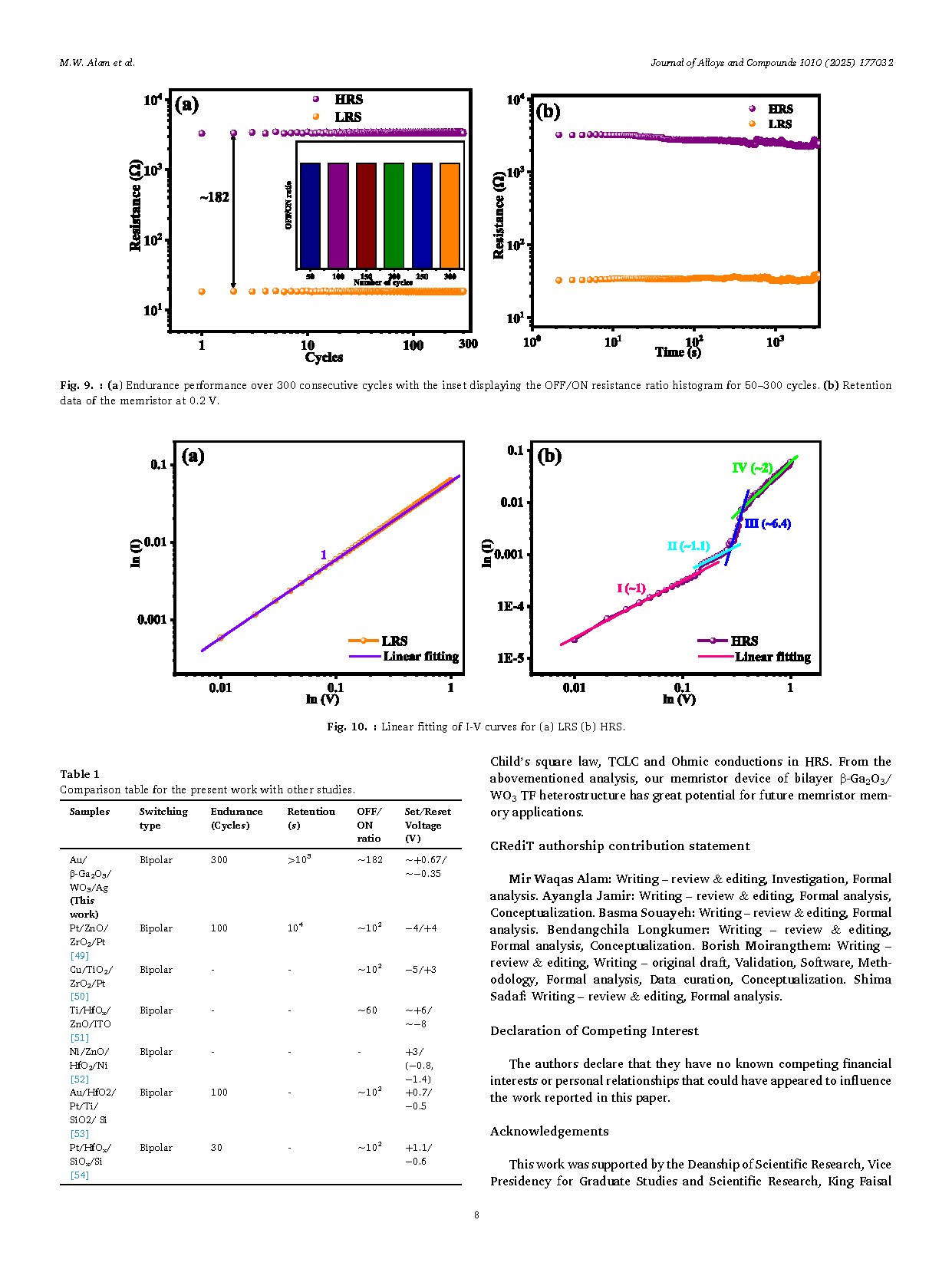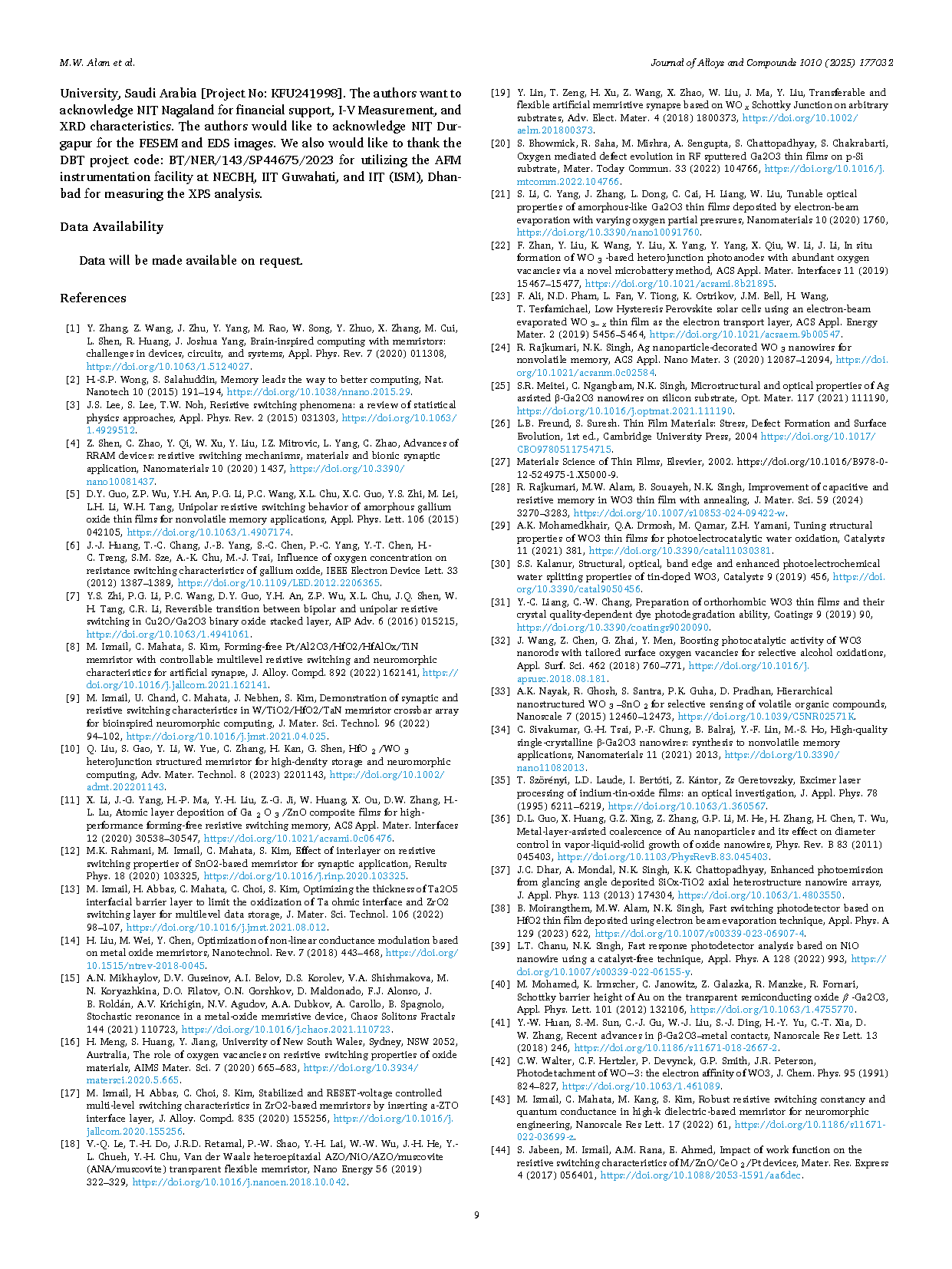
【International Papers】Bipolar resistive switching behavior of bilayer β-Ga₂O₃/WO₃ thin film memristor device
日期:2024-12-13阅读:485
Researchers from the King Faisal University have published a dissertation titled "Bipolar resistive switching behavior of bilayer β-Ga2O3/WO3 thin film memristor device" in Journal of Alloys and Compounds.
Abstract
This article investigates the bipolar resistive switching behavior of bilayer Au/β-Ga2O3/WO3 thin film (TF)/Ag heterostructure memristor device deposited using an electron beam evaporation technique. The purity of the deposited sample was confirmed by the XRD and FESEM with EDS characterizations. The root mean square roughness(RRMS) of single layer WO3 TF and heterolayer of Ga2O3/WO3 TF were obtained from the AFM analysis as 4.56 nm and 2.20 nm, respectively. The presence of more oxygen vacancies in WO3 sample was also confirmed by the XPS analysis. The optical measurement of the sample also revealed a bandgap of ∼ 4.35 eV for β-Ga2O3 TF and ∼ 3.66 eV for WO3 TF. Moreover, the bilayer Au/β-Ga2O3/WO3 TF/Ag heterostructure memristor device demonstrated bipolar resistive switching behavior with a good resistance ratio of ∼ 182, an endurance of 300 cycles, and a data retention of 103 s at room temperature. The device also yielded a low SET power of 1.17 mW (at 1.74 mA, +0.67 V) and a low RESET power of 2.50 mW (at 7.16 mA, – 0.35 V). The logarithmic current-voltage (I-V) relationship revealed that the switching behavior of the memristor device is mainly dominated by Ohmic conduction in LRS as well as Child’s square law, TCLC and Ohmic conductions in HRS. With the above parameters, the Au/β-Ga2O3/WO3 TF/Ag memristor device has the potential for future RRAM applications.
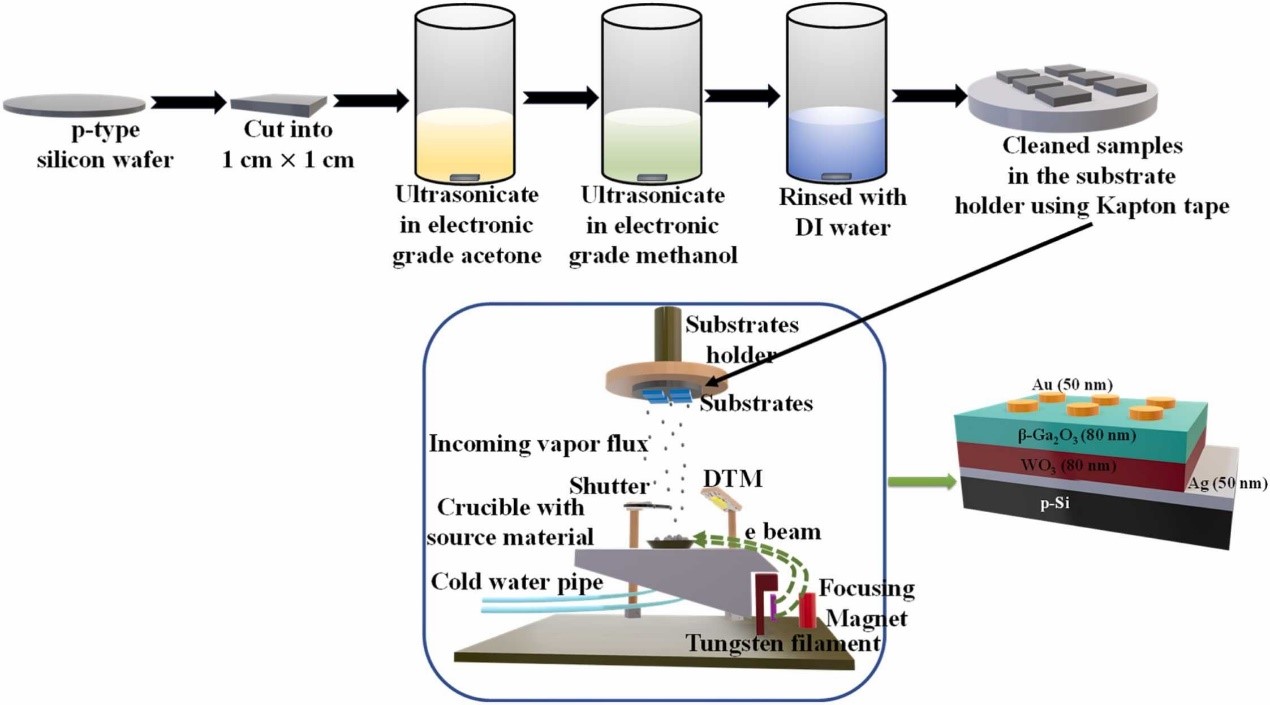
Fig. 1. Sample Preparation and deposition using e-beam evaporation technique with the schematic diagram of Au/β-Ga2O3/WO3/ Ag memristor device structure.
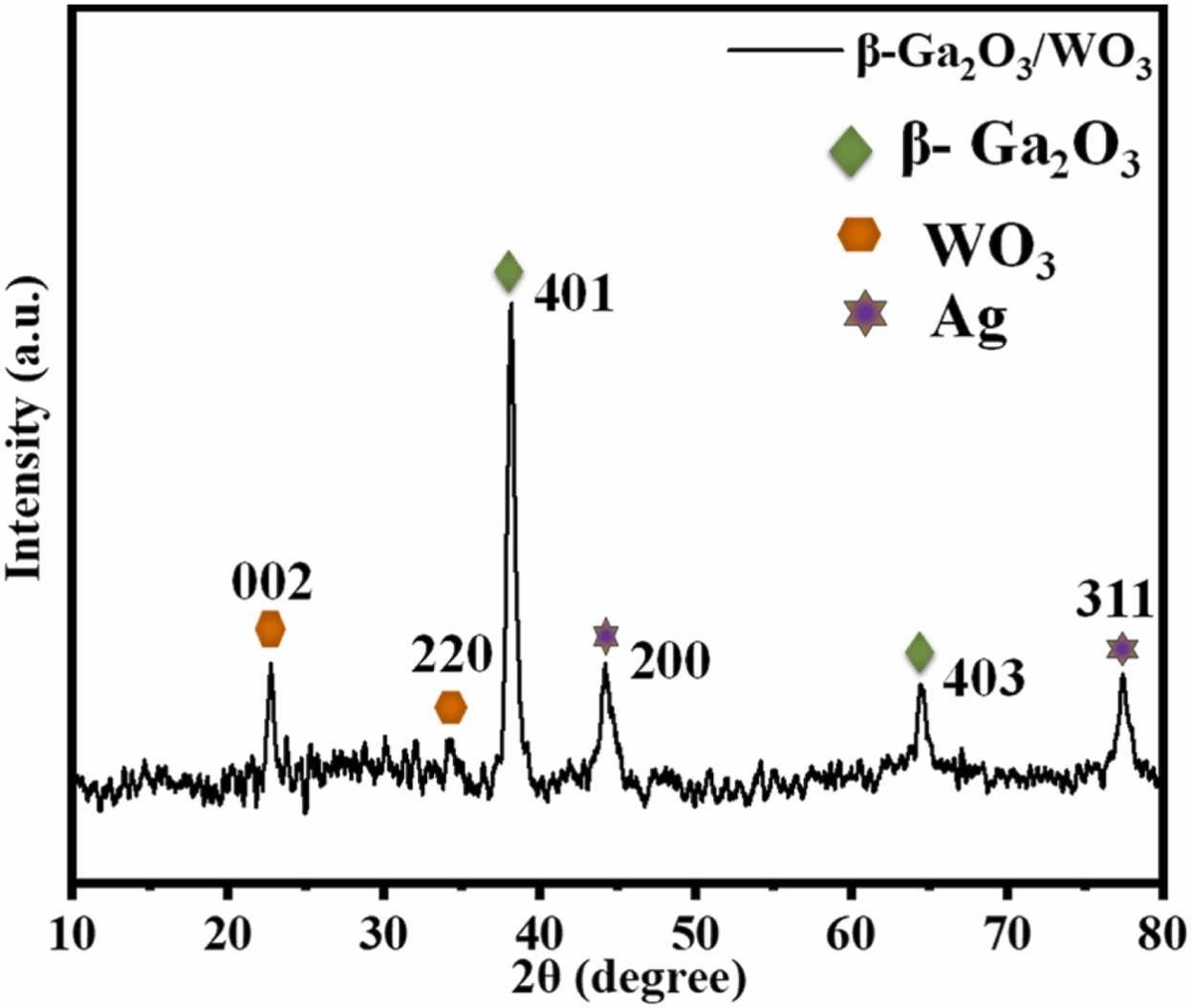
Fig. 2. displays the XRD pattern for the β-Ga2O3/WO3/Ag TF sample, recorded in the diffraction angle (2θ) range of 10–80°. The first peak, indexed as (002), is observed at 22.70°, followed by peaks indexed as (220), (401), (200), (403), and (311) at 34.20°, 38.10°, 44.20°, 64.45°, and 77.44°, respectively. The diffraction peak orientation at (002) and (220) were correlated with the WO3 TF, while the orientation at (401) and (403) corresponded to β-Ga2O3 TF. The orientation peaks at (200) and (311) were attributed to the Ag TF. From this XRD pattern, we have observed the absence of other unidentified peaks, confirming the purity of our deposited samples.
DOI:
doi.org/10.1016/j.jallcom.2024.177032
